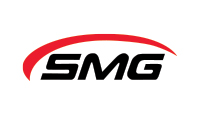On Friday March 28, 2014, the Obama administration released its Strategy to Cut Methane Emissions as part of its Climate Action Plan.
Methane accounts for nearly 9 percent of the domestic greenhouse gas emissions and is the second largest greenhouse gas after carbon dioxide. The White House said while methane emissions in the United States have decreased by 11 percent since 1990, they are projected to increase due higher oil and natural gas production resulting from increased hydraulic fracturing. According to the administration, the largest sources of methane emissions are leaks from oil and gas facilities; seepage from coal mines; landfills; and livestock.
The administration’s plan develops a strategy to reduce methane emissions from landfills, coal mining, and agriculture, and oil and gas industry through new rules and voluntary action by industry as follows:
• The Environmental Protection Agency (EPA) will propose updated standards this summer to reduce methane from new landfills and take public comment on whether to update standards for existing landfills.
• In April of 2014, the Interior Department’s Bureau of Land Management (BLM) will release an Advanced Notice of Proposed Rulemaking (ANPRM) to gather public input on the development of a program for the capture and sale, or disposal, of waste mine methane on lands leased by the Federal government. In addition, EPA will continue to partner with industry through its voluntary program to reduce institutional, technical, regulatory, and financial barriers to beneficial methane recovery and use at coal mines.
• In June, in partnership with the dairy industry, the US Department of Agriculture (USDA), EPA and the Department of Energy (DOE) will jointly release a “Biogas Roadmap” outlining voluntary strategies to accelerate adoption of methane digesters and other cost-effective technologies to reduce U.S. dairy sector greenhouse gas emissions by 25 percent by 2020. USDA and EPA will also continue to support bio digester technology deployment by providing financial and technical assistance through voluntary programs.
• In the spring of 2014, EPA will assess several potentially significant sources of methane and other emissions from the oil and gas sector and in the fall of 2014 will determine how best to pursue further methane reductions from these sources. If EPA decides to develop additional regulations, it will complete those regulations by the end of 2016.
The complete Strategy to Cut Methane Emissions can be reviewed at http://www.whitehouse.gov/sites/default/files/strategy_to_reduce_methane_emissions_2014-03-28_final.pdf .
